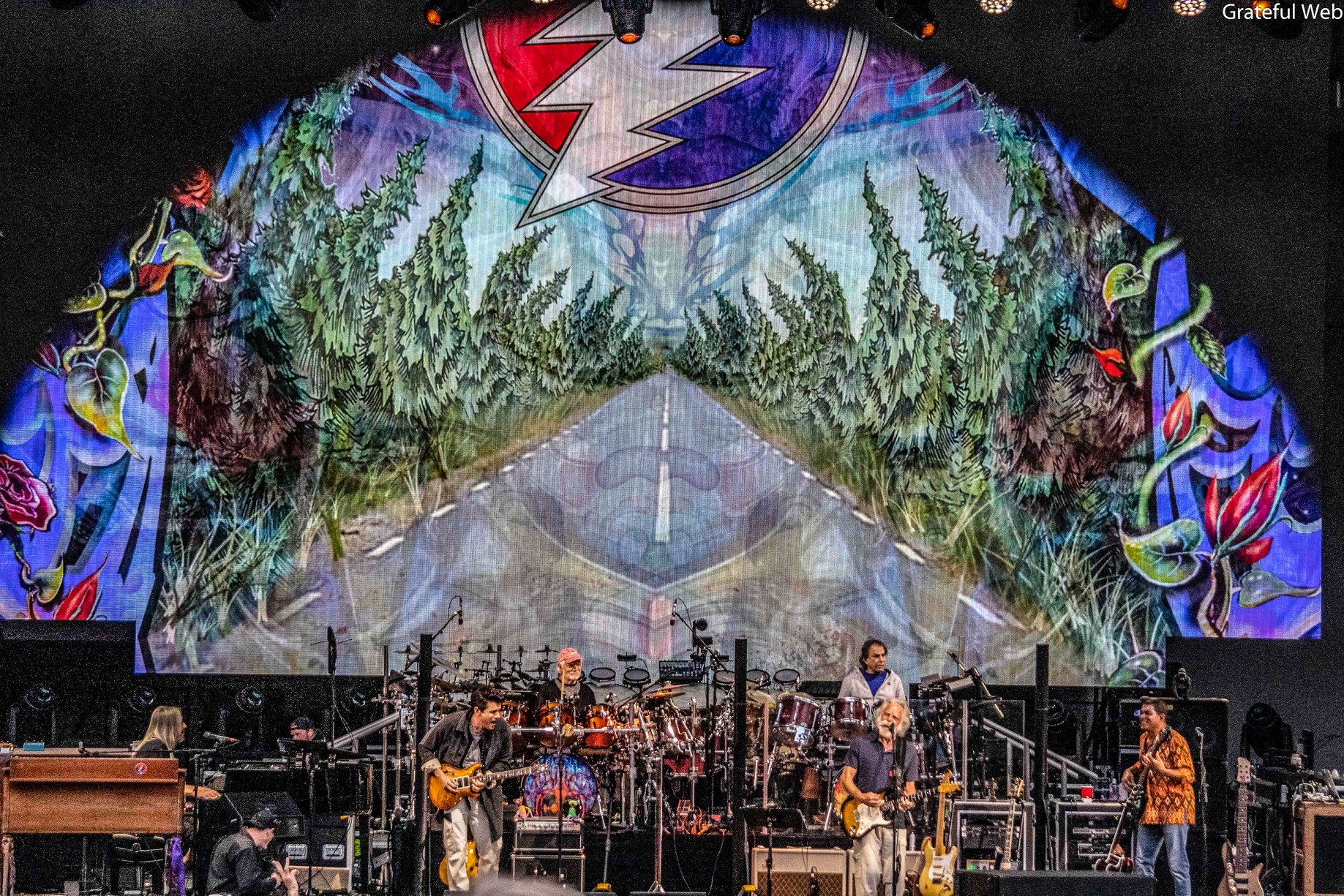A massive crowd of the Grateful Dead faithful, with and without tickets, descended on the Hollywood Bowl for the first of two sold-out shows on Monday, June 3rd. Those lucky enough to get in were not disappointed. Seventeen thousand ecstatic music fans were treated to two sets of music from the Grateful Dead catalog and more. The three and a half hour music marathon even featured a Grateful Dead classic, High Time, that had never been played before by Dead and Company.
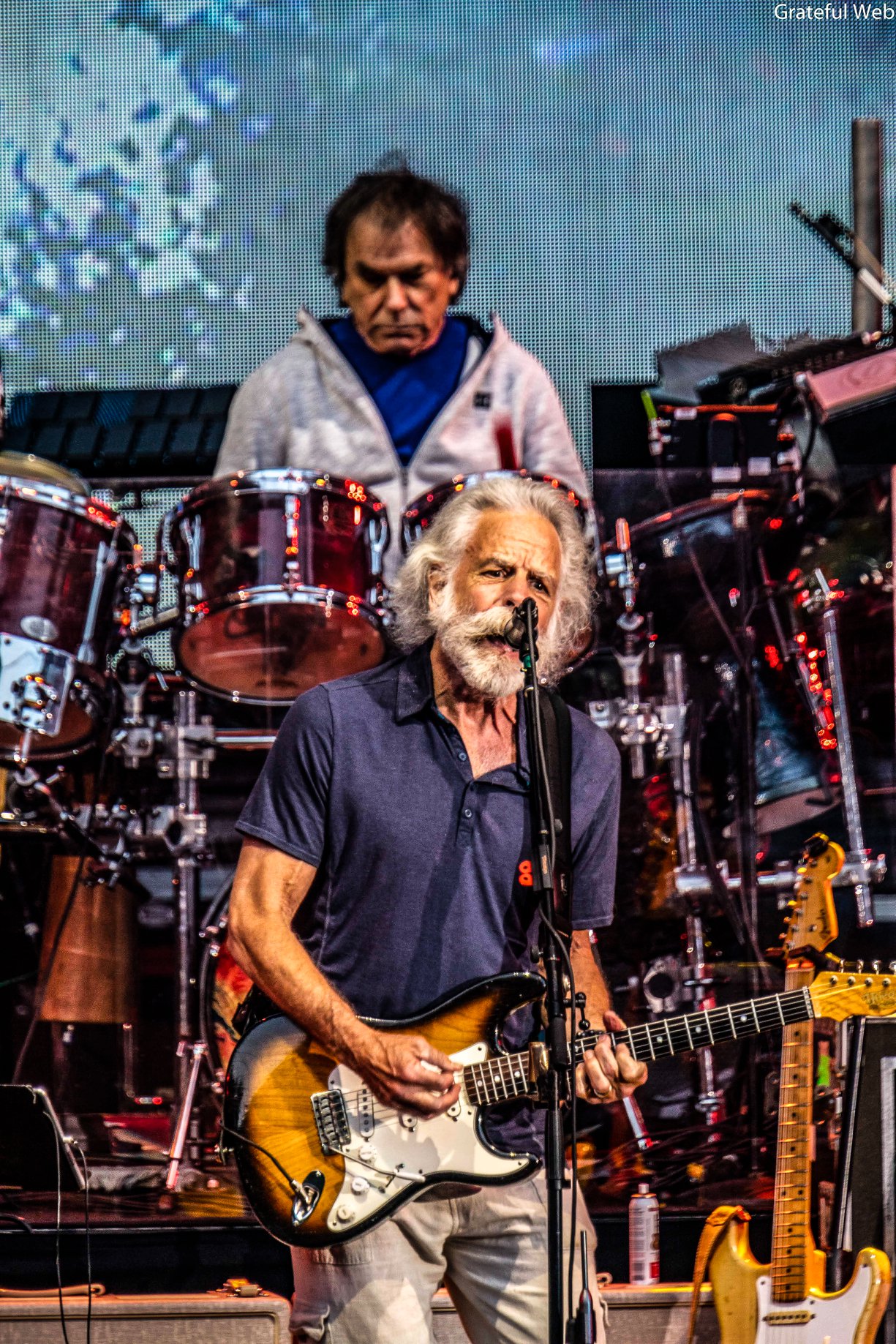
For the uninitiated, attending a concert at the legendary Hollywood Bowl can be a daunting task. Located on one of the busiest corners of Hollywood, the surrounding area is already a ground zero tourist destination with traffic gridlock on any given day. But adding 17,000 concert goers to the mix can create a logistical nightmare. Locals know there are a myriad of ways to mitigate what can be a frustrating time trying to access the Bowl. Parking around the Bowl is expensive and features the dreaded stacking technique, meaning that everyone must exit at the same time. The Bowl’s website lists a whole host of transportation alternatives including park and ride locations with buses and shuttles from accessible places. Rideshare companies and city buses are another alternatives. For tourists wanting to get the full Hollywood experience, parking at the Highland Center is a good alternative. The tourist megacenter, where the famed TCL Chinese Theatre is located, features a massive parking structure, restaurants, shops and a bird's eye view of Hollywood Boulevard and Stars Walk of Fame. There is a shuttle for a few dollars that takes concert goers the 1.1 miles to the Hollywood Bowl, but fit music fans may want to walk. The shuttle can take over an hour to traverse the mile in rush hour traffic, and any local transport suffers from the same fate.
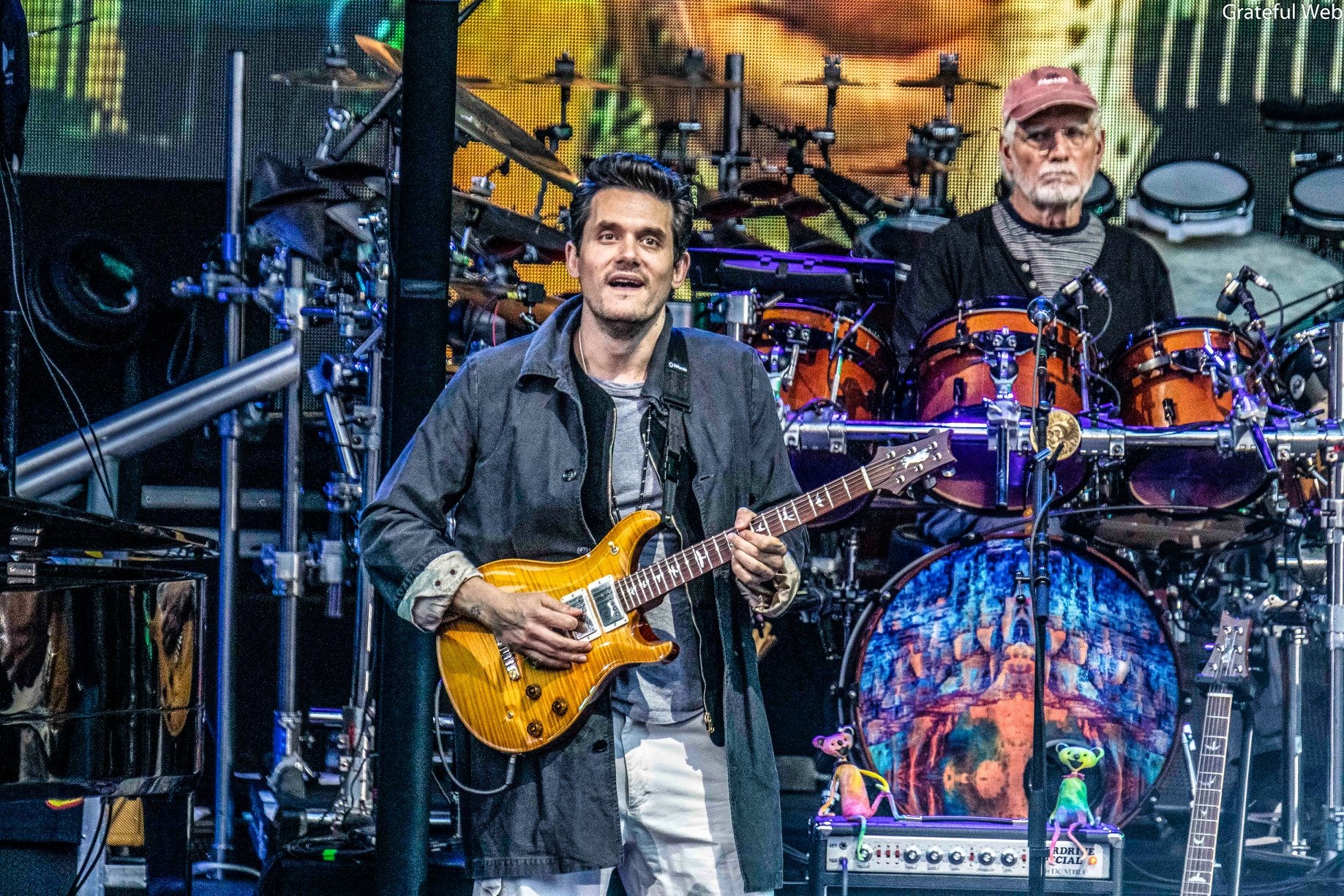
The solution for savvy concert goers is to make a day of a concert event and arrive exceptionally early. Many music fans picnic in nearby parks before shows at the Bowl, but for a Dead and Company concert, hardcore fans began arriving shortly after dawn. Throngs of Grateful Dead paraphernalia merchants set up impromptu displays all about the surrounding areas. Deadheads en masse could be easily spotted flooding the sidewalks of Highland Avenue in their colorful tie-dye clothing. Just like most venues in the country, the Hollywood Bowl has increased security in light of domestic terror threats. With safety and security, a priority everyone entering the facility must be carefully searched and screened by metal detectors. The massive sold-out crowd lined up early for the grueling process, but with so many music fans, the first set was delayed a bit to allow concertgoers to find their way to their seats.

Once inside the Bowl, most music fans quickly forgot about the inconveniences and took in the festive atmosphere unique to a Dead and Company concert. The Bowl itself is like visiting a small town, with its own security, snack bars, restaurants both fancy and fast food, wine and beer bars and even a general store with picnic supplies for those who forgot their own. Box seats also have their own waiters dashing about delivering food and drink throughout the evening.
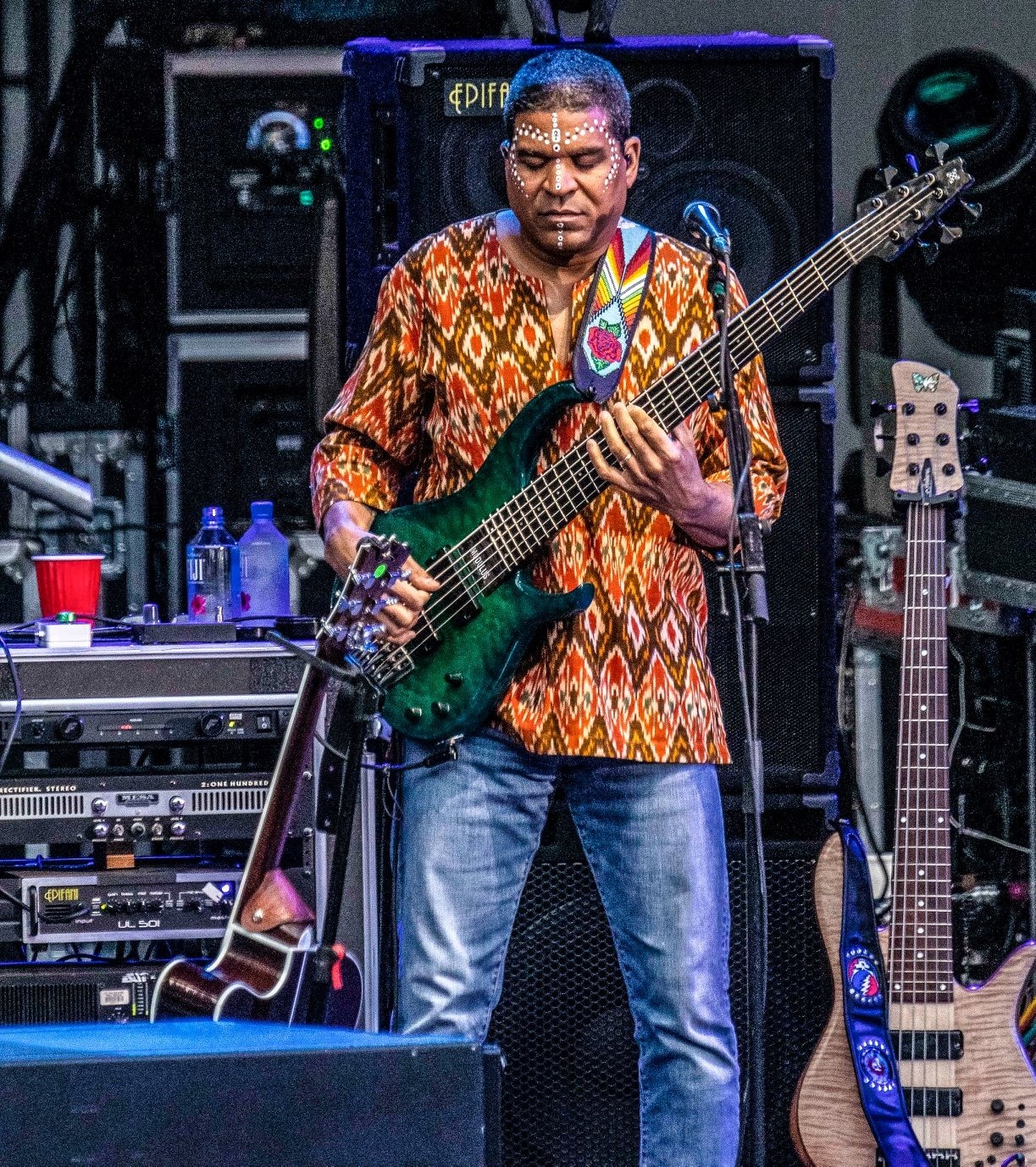
The first set began just after 7:15 under gray skies with a gorgeous view of the surrounding Hollywood Hills. The band opened with Cold Rain and Snow a traditional cover initially played by the Grateful Dead on May 5th, 1965 at Magoo's Pizza Parlor in Menlo Park, California. The crowd erupted as John Mayer began singing and playing some bluesy licks on lead guitar. If there was any theme for the night, it was to drench the setlist in a Blues-inspired backdrop. For those music fans unfamiliar with a Dead show, the level of devotion of Deadophiles to the minutia of any particular show can be intimidating. Some hardcore Grateful Dead fans have still not accepted Dead and Co. as heirs to their music. The current band, formed in 2015 consist of three of the four surviving members of the original Grateful Dead, Bob Weir, Mickey Hart, and Bill Kreutzmann. Oteil Burbridge took over the role of original bassist Phil Lesh. The four original members agreed never to perform all together again after their 50th anniversary Fare Thee Well tour. Longtime Grateful Dead keyboardist Jeff Chimenti joined Dead and Co., and guitar wizard John Mayer rounded out the group. For most fans of the music, the band is just a new evolution of the original group augmented by the incredible talents of Mayer and Burbridge. Some bristle at the fact that the pair took over the mantels of the original masters Jerry Garcia and Phil Lesh. But the newest musicians in the band have proven themselves over the last four years offering up incredible performances. The feat is all the more remarkable considering that Dead and Co. never play the same set twice and rarely repeat songs on any given tour.
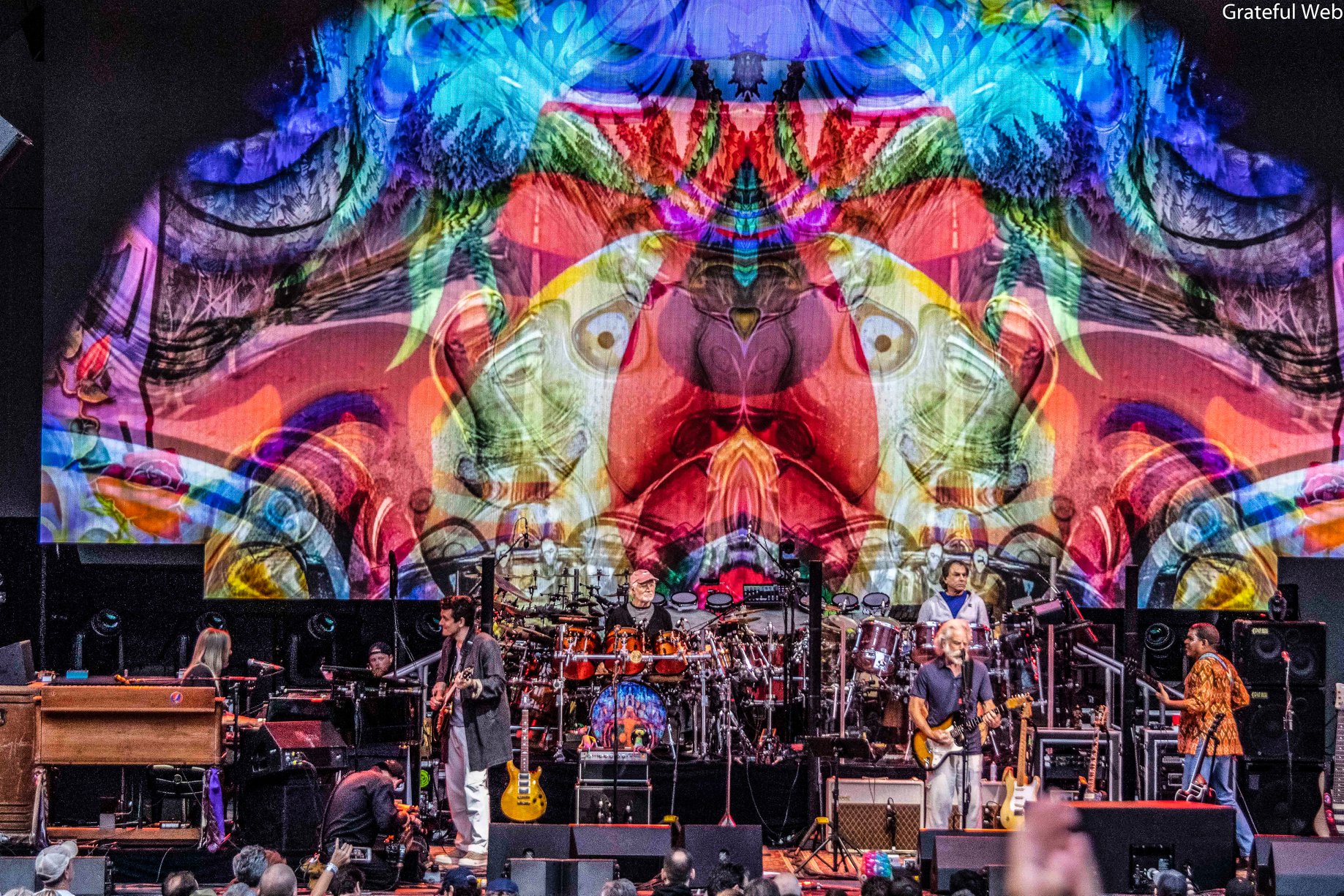
Most hardcore fans embrace the newest incarnation of the Dead and are happy to share their wealth of information with the uninitiated. Not only can many fans tell novices what song was being played and when it was first recorded but sometimes, they can even tell what song will come next. On this particular night of music, a series of Grateful Dead covers came next including an In The Dark's Hell In a Bucket, another blues-soaked 60’s classic Easy Wind and from Wake Of The Flood's Mississippi Half-Step Uptown Toodeloo. That was followed by the biggest surprise of the night, the first time that the band covered the Grateful Dead classic High Time. Bob Weir and Oteil shared vocals, sending the exuberant crowd into a mass dance trance. Another early 70’s classic Dead cover came next, Jack Straw. Dead and Co. made the song their own with Mayer and Oteil adding improvisational riffs. An even deeper cut came next with a cover of Bird Song, from the 1972 solo album “Garcia” from the iconic Jerry Garcia. Chimenti shined on keyboards and the two guitarists traded classic riffs. As if to highlight Dead and Company's roots in authentic American Blues music the group ended their mesmerizing first set with a genuinely historical cover of Don’t Ease Me In, which was first played live by the Grateful Dead in 1969. Henry Thomas was a fascinating figure in American Blues music. He was born the son of freed slaves in 1874. The singer and musician wrote songs that were recorded in the 1920s. The pop music world rediscovered his recordings in the 1960s and was covered by a multitude of artists including Bob Dylan and the Grateful Dead. As evening fell, the band gave the song a fitting electric charged blues infusion.
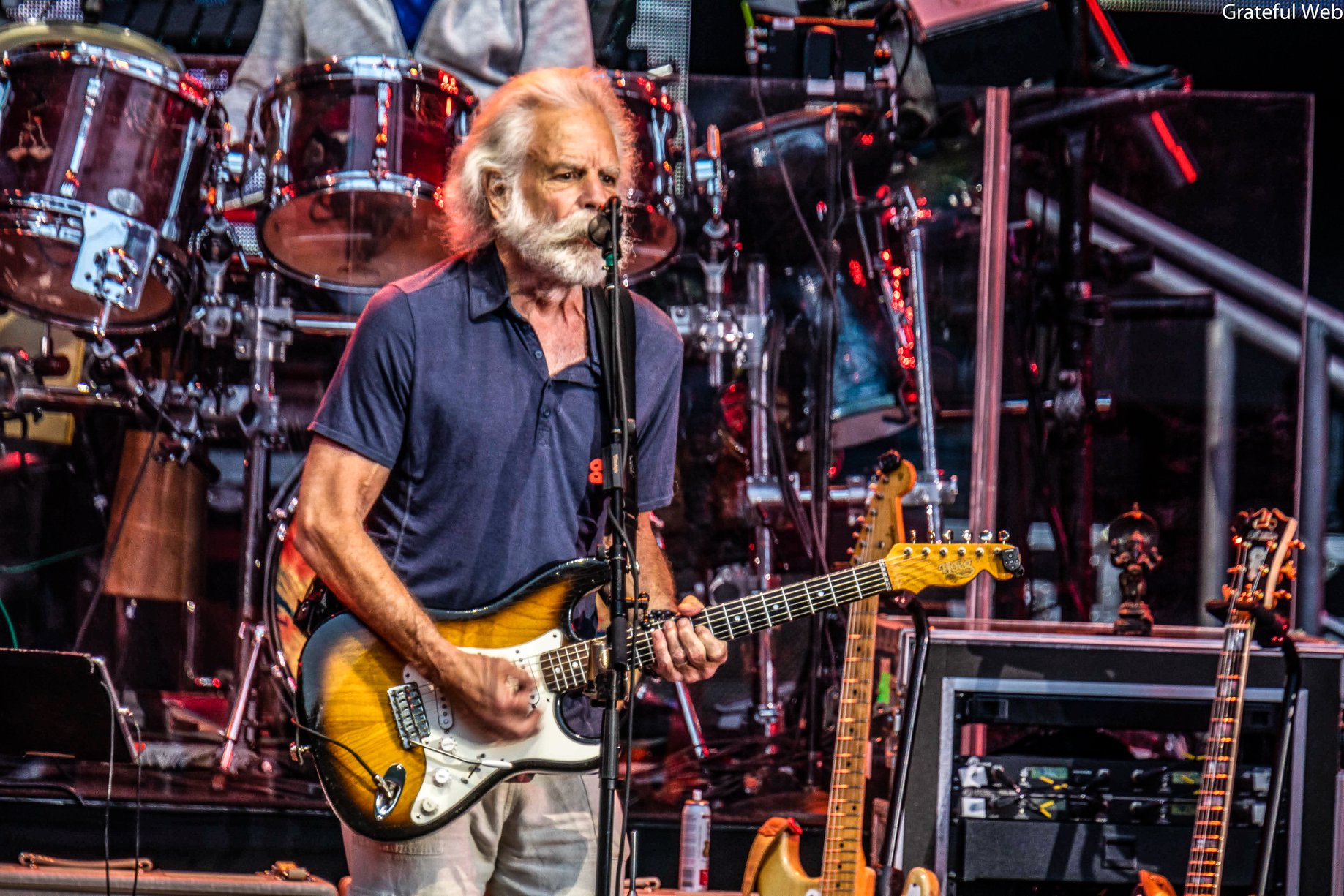
A beaming crowd compared notes during intermission while swarming the myriad concessions. The second set exploded in a spectacular light show shining into the foggy night air. Bob Weir took the lead on a cover of Iko Iko, a much-covered R&B song initially recorded in 1965 by The Dixie Cups. It was another moment where the consummate jam band reinvented American music history. Songs from the 1970 Workingman’s Dead album made it into the second set as well as the first with a cover of New Speedway Boogie. The band then returned to a Jerry Garcia homage playing another classic cut from the “Garcia” album, Sugaree. Mayer played some ballistic riffs during the riveting cover that created another wave of Dead dance trance fever.

As the evening went on the astounding production value of the Hollywood Bowl blended into the bands, own unique graphics, and lighting presentation. The result was an ever more intricate, psychedelic multimedia extravaganza that was sure to please any veteran Deadhead reliving flashbacks from times long gone. Occasionally large video screens would show crowd shots combined with live shots of the band and trippy graphics. The Hollywood hometown crowd always sports a smattering of celebrities, and a cheer would go up when a sports or film star would be recognized on the multiple big screens. One of the biggest cheers of the night came when the camera found retired basketball player and television sportscaster Bill Walton in the pit in adulate ecstasy. The tall, beaming Walton raised his hands in excitement as the band played another classic Blues drenched Grateful Dead cover of Franklin’s Tower. The song was one of a trio of cuts from the Middle Eastern-themed 1975 Grateful dead album “Blues for Allah,” including Help on the Way and Slipknot!

Drummers Kreutzmann and Hart then took over the stage for a genuinely psychedelic percussion infused foray into experimental music. The pair began with a Grateful Dead cover of Drums. Then Oteil joined in, and the trio played a thunderous tribal drumbeat. Kreutzmann and Hart segued into another Grateful Dead experimental gem Space. Hart delved into otherworldly sounds playing a strange assortment of electronic instruments with a fitting multimedia backdrop.

The rest of the band returned to the stage and slowly faded into a soft pleasing rendition of Hunter/Garcia's Stella Blue. The group ended their second set with a happy go lucky clap along, cover of a cover, Not Fade Away. The 1958 hit song by Buddy Holly and The Crickets was uncharacteristically one of the most played songs by the Grateful Dead during their live shows. It was a fitting end to the musical marathon from the Dead and Co. The catchy rhythm left the crowd clapping and singing “not fade away” as the band left the stage. Just like at countless Grateful Dead shows in the past, it was also the perfect transition to a mass crowd call for an encore. For this magical night of music, the band graced the crowd with their interpretation of the iconic Terrapin Station. As the final notes of the encore faded into the late-night air, nearly all the 17,000 in the sold-out crowd stood cheering until the band left the stage for the last time.





